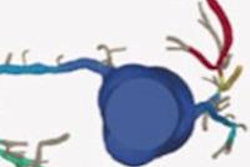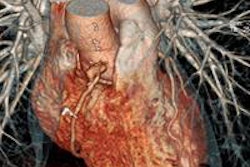
For patients with suspected coronary artery disease, initial perfusion cardiac MR plus invasive angiography if needed is cheaper than initial invasive angiography or angiography plus fractional flow reserve (FFR), according to new multinational research at last month's European Society of Cardiology (ESC) meeting in London.
Using data from Swiss, German, and U.K. facilities in the European cardiovascular MR (CMR) registry and U.S. centers to work out the figures for a CMR versus an angiography-plus-FFR strategy, cost savings ranged from 14% to 27%, depending on the country. Costs ranged from 59% to 71% less, again, depending on country, for CMR versus angiography alone, the authors reported.
"The results indicate that the healthcare system, i.e., the costs of tests, but also patient characteristics, represent important factors that determine the cost-effectiveness of various workup strategies," noted Karine Moschetti, PhD, from the University of Lausanne Hospital in Switzerland, the University of London, and colleagues in a scientific poster.
Moschetti is a project manager of health economics research. CT was not considered in her study.
Ischemia key to outcomes
The presence of myocardial ischemia is important to the outcomes in patients with suspected coronary artery disease, and there is more than one way to evaluate which patients will benefit most from cardiac revascularization.
There are also different price tags associated with the modalities. And although perfusion CMR has been shown to be safe and effective, how much it costs relative to the alternatives is unknown, as there is "little data available to estimate potential cost savings of a CMR-based approach," the study team wrote.
Putting three strategies to the test
Therefore, the group aimed to compare the cost of three decision strategies for revascularizing patients with suspected coronary disease. The study was based on 3,647 patients with suspected ischemia from the European CMR registry who had undergone an ischemia workup with CMR. The strategies included:
- CMR to assess patients with ischemia followed by invasive angiography in ischemia-positive patients
- Hypothetical calculation based on patients undergoing invasive angiography followed by conventional FFR
- Hypothetical strategy based on invasive angiography alone
Costs were calculated from the perspective of a healthcare payor, and the costs of complications were based on 2014 data. No complications data were added to the CMR and x-ray options alone. The authors calculated costs for the entire population along with patients with typical angina (n = 582) and atypical chest pain (n = 786) separately, Moschetti et al reported.
CMR-positive patients underwent revascularization at the physician's discretion, while in the angiography-only group, subjects with 50% or greater stenosis at surgery were deemed to have significant stenosis.
CMR plus angio most cost-effective
| Cost savings between CMR-angiography approach, and angiography plus FFR | ||||
| Cost savings | U.K. | Germany | Switzerland | U.S. |
| CMR versus angio + FFR | 14% | 34% | 27% | 24% |
| CMR versus angio alone | 59% | 52% | 61% | 71% |
| Effect on savings: Add 10% to CMR cost | -0.7% | -2.3% | -3.7% | -4.3% |
As expected in those patients with typical angina pectoris, the revascularization rate was higher than that of the entire population, and the CMR plus angio approach yielded lower net economic benefits when compared with the angio + FFR approach, the team wrote. The resulting net benefit of CMR plus angio in this scenario range from 2.5% for German patients to 18.9% for U.K. patients. For those patients with atypical angina pain, costs were comparable with the study population as a whole.
As for limitations, the researchers calculated costs based on the literature with regard to degree of stenosis and FFR findings, the team wrote. However, they did not use the study data to determine those relationships among the population.
A CMR plus angio strategy to manage patients with suspected coronary artery disease is less costly than a hypothetical invasive coronary angiography plus FFR for patients with suspected coronary artery disease, the team concluded.
Atypical chest pain lowers savings
The finding was observed in the German, U.K., Swiss, and U.S. healthcare systems, they added. Health savings for the strategy were lower in patients with typical angina.
The results indicate that healthcare systems (i.e., the cost of tests) and patient characteristics "are important factors that determine the cost-effectiveness of various workup strategies," Moschetti and colleagues concluded.



















